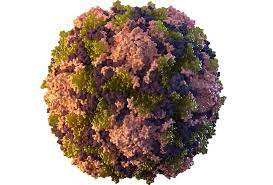Brown University researchers uncover alarming link between household firearm ownership and elevated lead levels in children, highlighting a previously overlooked public health concern.
Childhood lead exposure, long recognized as a serious health threat in the United States, has taken on a new dimension with the discovery of firearms as a significant source of lead exposure in children, a groundbreaking study led by Brown University researchers has revealed.
The study, published in the Journal of Pediatrics, sheds light on the association between household firearm ownership and elevated lead levels in children’s blood across 44 states. Lead exposure from firearms, a less explored but potentially dangerous source, poses a significant health risk to children, according to Christian Hoover, a Ph.D. candidate in epidemiology at Brown’s School of Public Health and lead author of the study.
“Firearm use is a relatively unchecked source of childhood exposure to lead,” Hoover emphasized. “This is very concerning because we don’t have a system of monitoring lead from firearm use, as we do with residential paint, and there is no system in place to minimize or prevent children’s exposure to lead in firearms.”
The study revealed a robust association between firearm ownership and elevated lead levels in children’s blood, mirroring the correlation observed with lead-based paint. Despite efforts to mitigate lead exposure from traditional sources like paint and water, childhood lead poisoning remains a persistent issue in the United States, underscoring the urgency of addressing emerging sources of exposure.
Firearm-related lead exposure occurs when lead-based ammunition is discharged, releasing lead dust that settles on personal items and common spaces frequented by children. Young children, with their hand-to-mouth behaviors, are particularly vulnerable to ingesting lead contaminants, amplifying the risks associated with firearm use in households.
“For every 10% increase in the number of households reporting firearm ownership, there is an approximate 30% increase in cases of elevated pediatric blood lead levels,” the study found.
Joseph Braun, a professor of epidemiology and director of the Center for Children’s Environmental Health at Brown, emphasized the detrimental effects of lead exposure on childhood development, including behavioral problems and reduced cognitive abilities. Braun emphasized the urgency of identifying and addressing modifiable sources of lead exposure to safeguard children’s health.
The study, spanning from 2012 to 2018, analyzed state-level household gun ownership data alongside blood lead concentration surveillance data for children under six. Utilizing a proxy measure developed by the RAND Corporation, researchers estimated firearm ownership levels across states, highlighting the widespread nature of the issue.
Despite the lack of a governmental database covering firearm ownership, the study underscores the need for targeted research to address firearms as a notable source of child lead exposure. Alan Fossa, a postdoctoral research associate in environmental health at Brown, also contributed to the study.
The research, supported by the National Institute of Environmental Health Sciences, marks a critical step in understanding and addressing the multifaceted challenges posed by childhood lead exposure, emphasizing the imperative of proactive measures to protect children’s health and well-being in the face of evolving threats.











